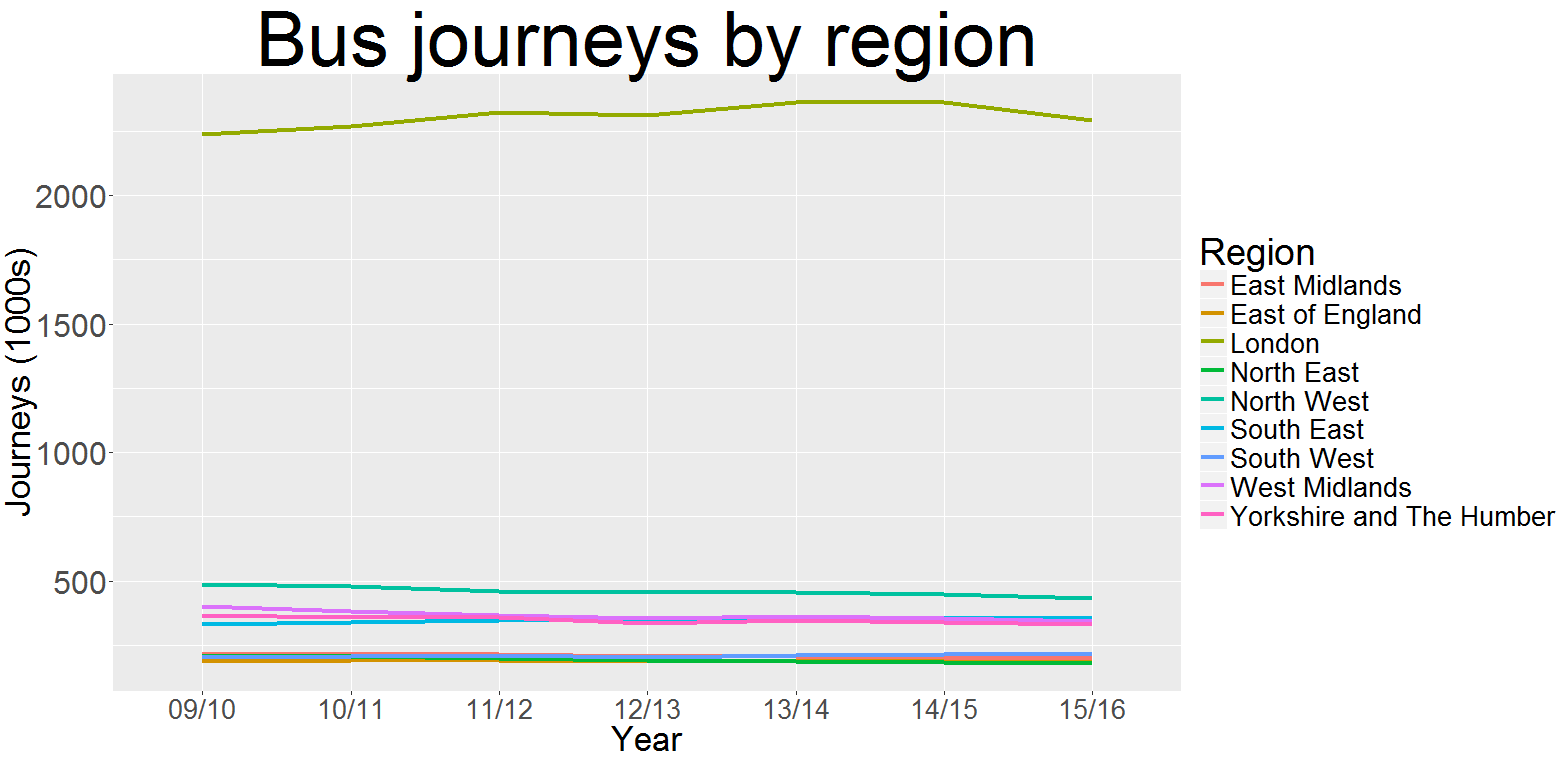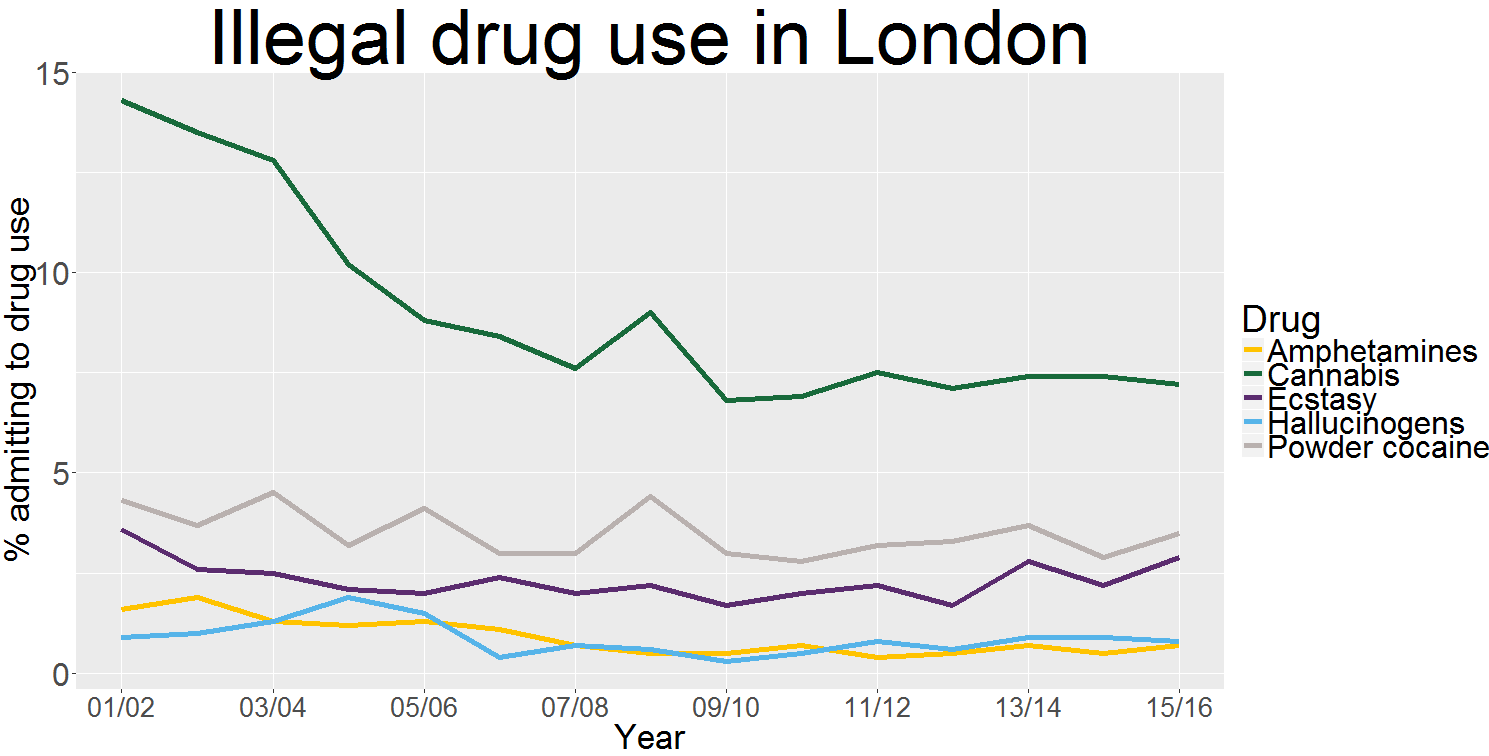In our previous two–part series we looked at the melt function from the reshape2 package. The creator of the package, Hadley Wickham, pointed me towards tidyr and the gather function as a better alternative instead.
Tag: journalism
Before we begin: Hadley Wickham, the reshape2 package creator, pointed me in the direction of the tidyr package for melting data. I’ll take a look at it after this post. As promised from before, a look at @hadleywickham‘s reshape2 package and Home Office drugs data #ddj #rstats https://t.co/Q46eUijsaG — R For Journalists (@rforjournalists) October 18, … Read More “Melting Drugs Data: Part Two” »

Every year the Home Office, which is responsible for drugs policy, carries out an anonymous survey into use of illegal drugs in England and Wales.
In the last post we discussed annotations on line plots.
In this post, we are going to take it a step further and look at block annotations.
Read More “Is Unemployment Higher under Labour or the Conservatives?” »
My colleagues and I at Trinity Mirror ranked mental health around England on Monday for World Mental Health Day.
We aggregated four datasets – depression, contact with mental health services, the recovery rate from anxiety and depression and antidepressant prescriptions – to produce a mental health ranking for all 209 Clinical Commissioning Groups (CCGs) in England.
Read More “How the North Has the Worst Mental Health in England” »

After looking at Manchester’s flat boom, we’re going over t’Pennines to Leeds, or more accurately the LS postcode for Leeds and the surrounding area.

© Copyright Geoff Royle and licensed for reuse under this Creative Commons Licence.
Any visitor to Manchester city centre will be struck by the number of modern blocks of city centre flats.
Take the tram out towards Altrincham and you’ll see modern apartment blocks on both sides, out towards Salford and back towards Castlefield.
Read More “Visualising the Boom in New Flats in Manchester” »
In my previous post, I showed how poorer children are more likely to be fat. Think about how your graphics look on a mobile phone before you publish them. I didn’t do this properly with my last post – I published it first and then checked how it looked on mobile. That isn’t the best approach – and it … Read More “Make Your Labels Legible on Mobile” »

Poorer children are more likely to be fat.
As we move further to the right of the chart into schools in more deprived areas, the share of children in the grey and black parts of the chart – showing overweight and very overweight kids – gets bigger.
This means that a class of year six children in inner-city Manchester will likely have bigger waistlines than one in leafy Hampshire.
A combination of bad diets and a lack of exercise means poorer children are sadly more likely to be fat at just 10 or 11 years old, with all the health problems that brings now and stores up for the future.


